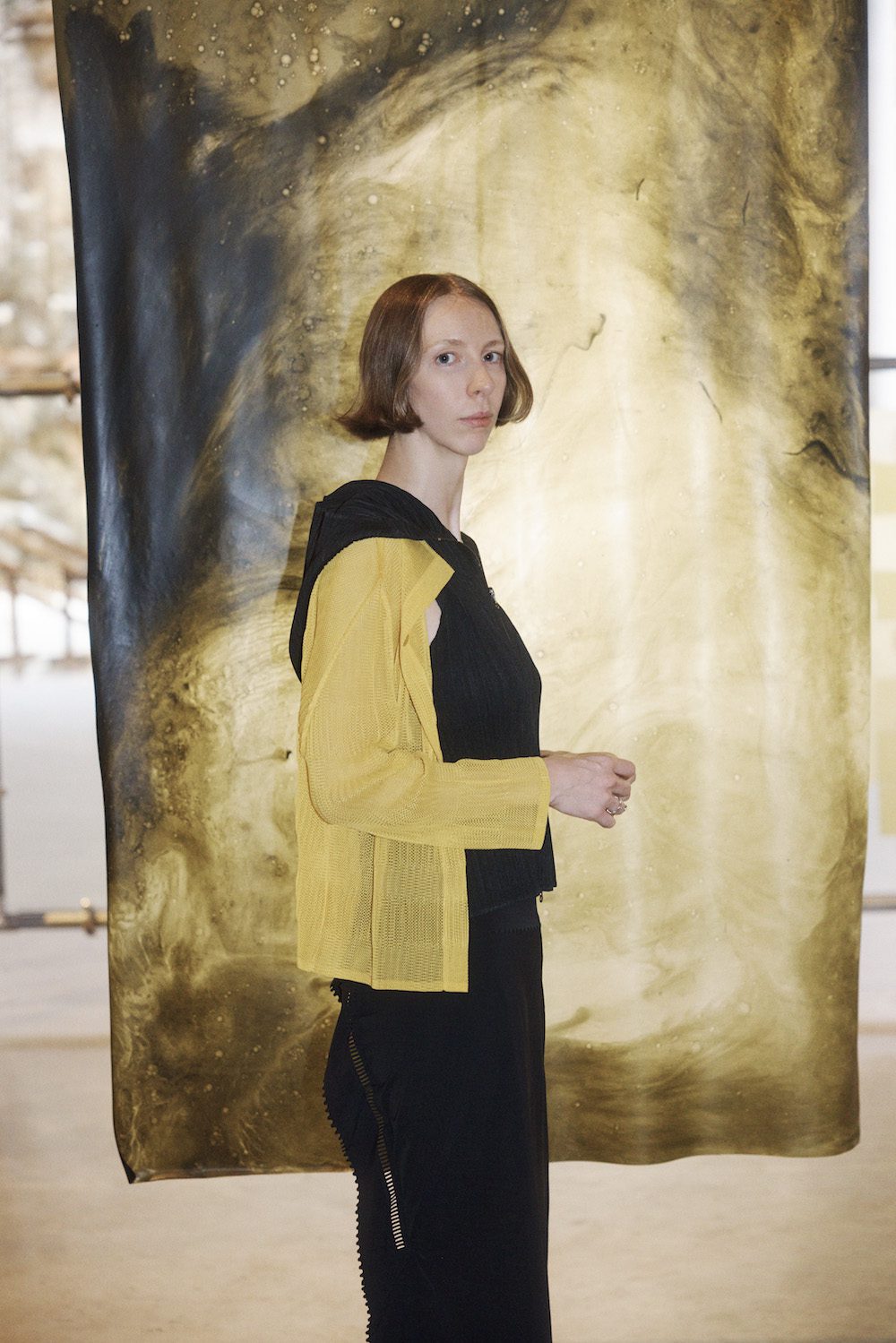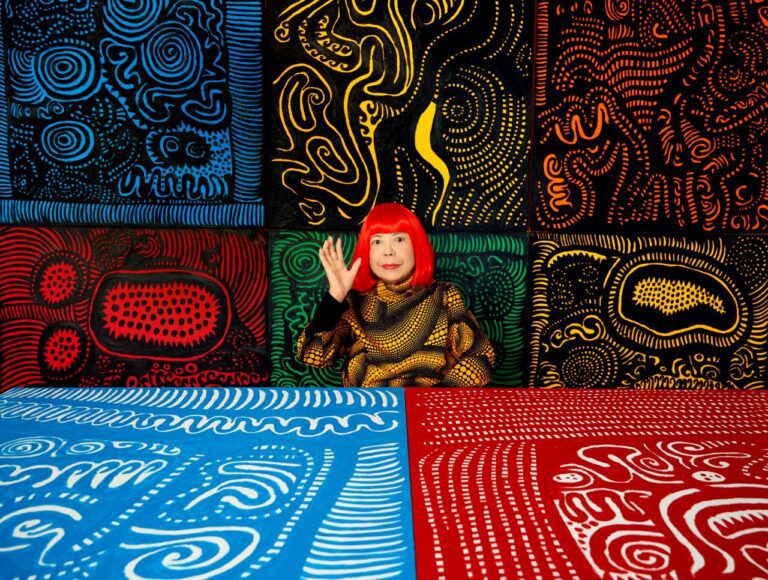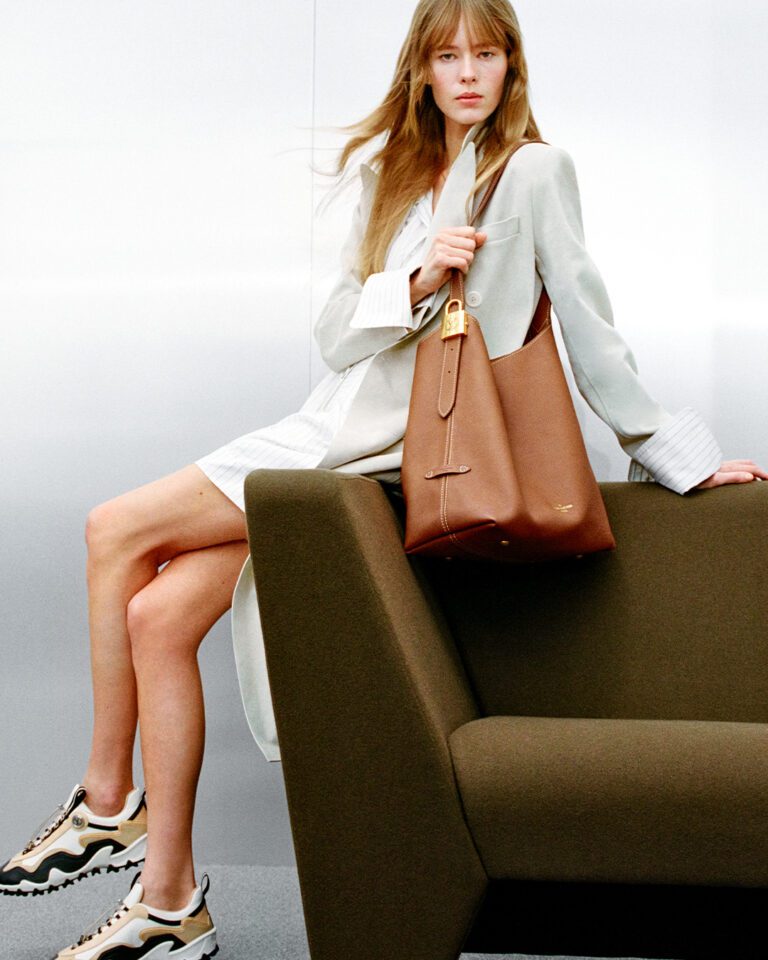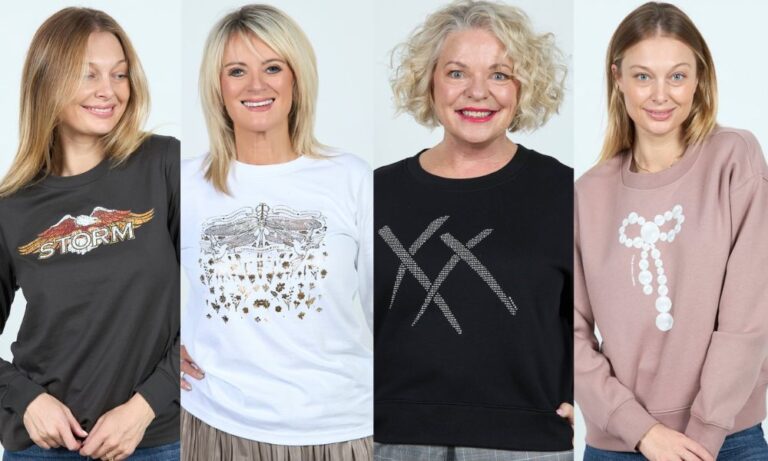Melbourne-based artist and designer Jessie French is not the kind of person who holds on to material things. Quite the opposite. Much of her work isn’t built for permanency, instead designed to be melted down, remoulded and formed anew. A bowl could become a sheet of plastic; a cup turned into cutlery.
Through her art and design projects, French seeks to challenge notions of consumption and the obsession with things that are built to last, posing experimental real-world solutions centred on regeneration, circularity and sustainability. “Most people in this generation have grown up with an idea about the issues with the environment,” she says. “With the Intergovernmental Panel on Climate Change reports coming out, each one is so hard to read. When you read reports like that, it’s hard to see any way out of what we’re facing.”
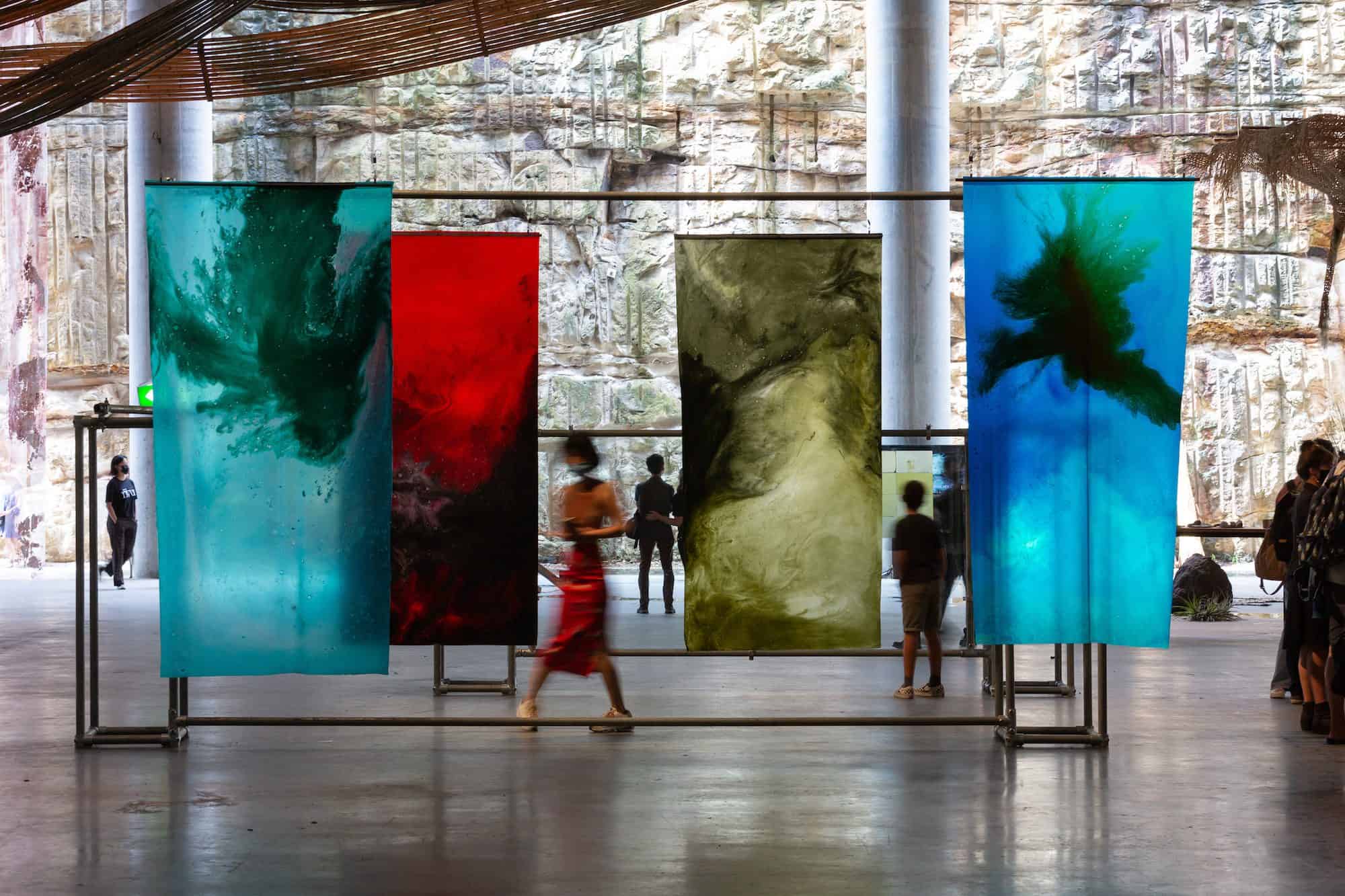
When confronted with this question of how to reconcile the doom and gloom of our environmental catastrophe, alongside the disillusionment of political inaction, French turns to art. “That’s where art has this power to change ideas and also provide some kind of hope through imagination. I think that’s what we need right now. Thinking about ways to change things from the bottom up.”
Her medium is around bioplastics. More specifically, algae-based bioplastics that are created in her Melbourne studio, where she experiments and envisions the possibilities of a “post-petrochemical world”. The idea for this algae-based bioplastic was cooked up (quite literally) in her kitchen during lockdown. She had recently returned from a residency in Morocco, where she uncovered a remarkable natural material. “I spent time there researching the supply chains of the main polymer that I use. It comes from three types of red algae that are processed into agar, a food source that is used in a lot of Asian cuisines and in the medical world. I was pleasantly surprised that the industry had done a lot of work to make sure it was sustainable. That’s basically why I’ve ended up continuing to use it.”
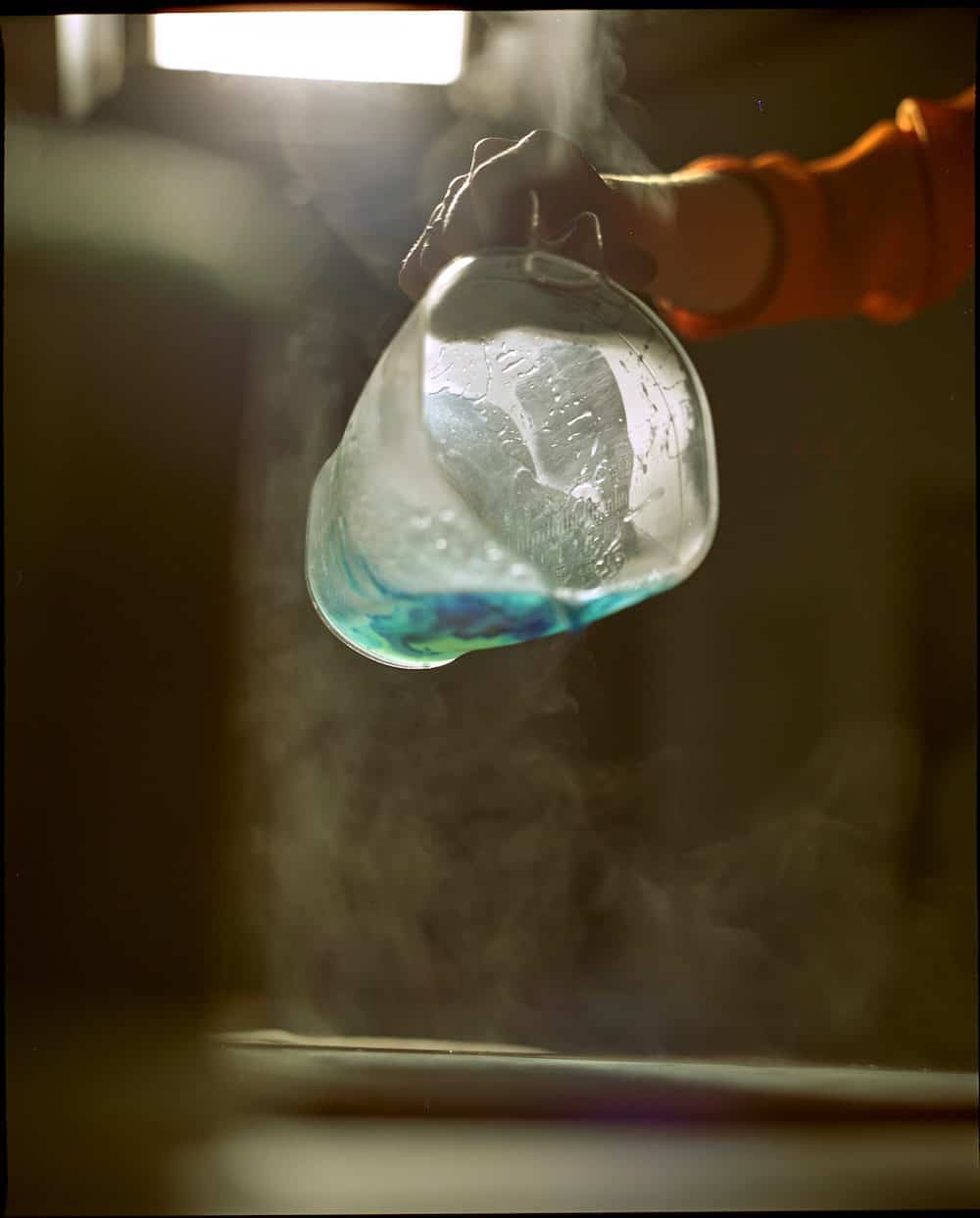
Returning to Australia as the country was thrust into a lockdown, she used her free time to experiment with this novel material, eventually leading her to found her own experimental design studio, Other Matter, where she has applied the unique material in various forms, including algae bioplastic tableware moulded into various cups and bowls, works that were awarded the Jardan Prize in the 2022 Victorian Craft Awards and recently acquired by the National Gallery of Victoria.
“The thinking was about a speculative future where ways of working with the bioplastic would be slightly different to the ways we work with current plastics. It’s much more readily degradable, but also the process of making it is almost like cooking. So there is this notion of a domestic setting where people could be making their own plastics and also recycling them after use.”
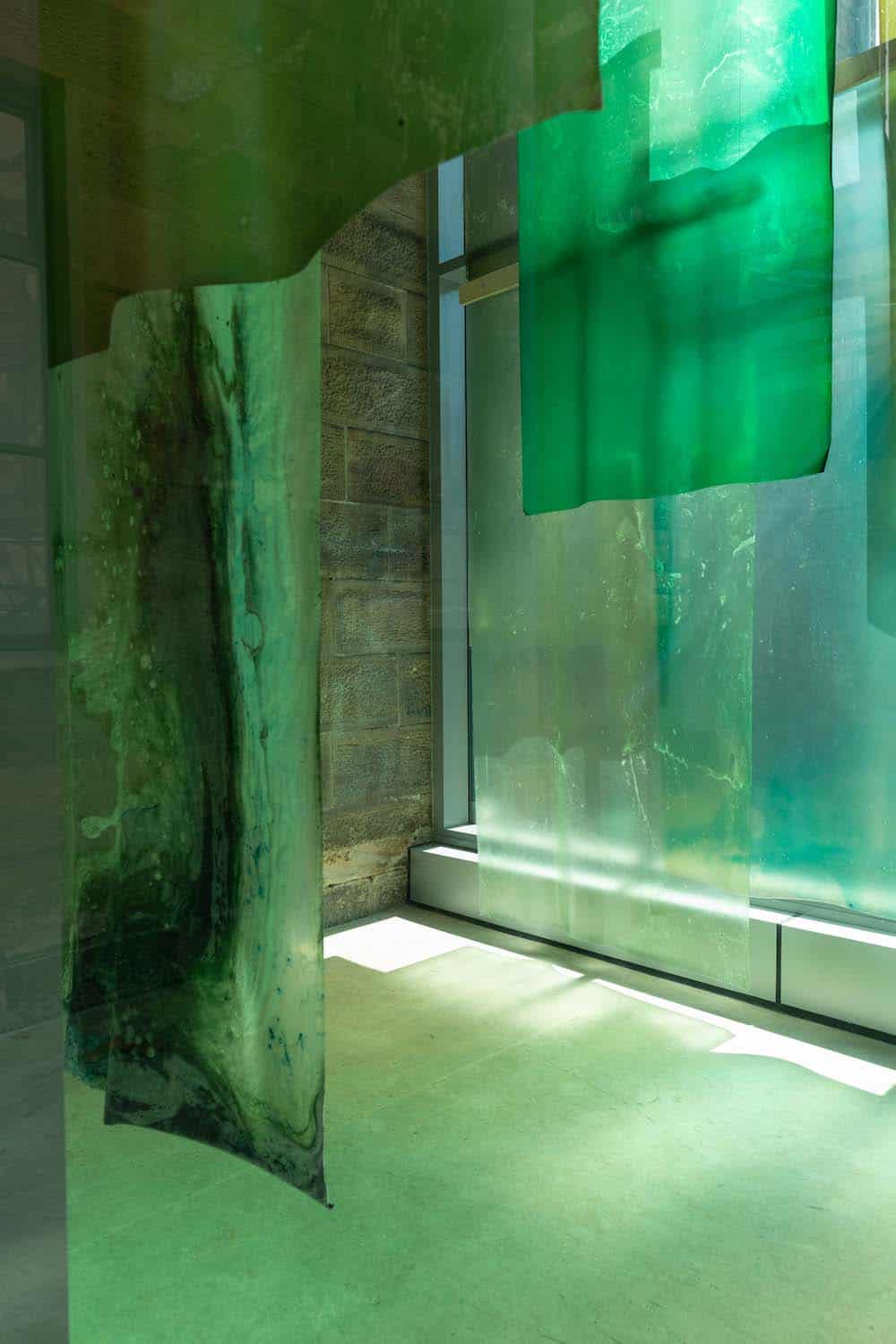
French’s melding of art, design and science partly comes from her background in studying the history and philosophy of science. “It comes from this idea of exploratory experimentation. The power to do science but not with a capital ‘S’. Not in a lab and not with any kind of expertise, but just having a go and seeing what can be done.”
This ‘having a go’ approach recently saw her create some of her largest works to date: 2.4 by 1.2-metre bioplastic sheets, in varying shades of colour and transparencies, created for the 23rd Biennale of Sydney this year. “Alongside the storytelling, I’m also having to master this technical side. There’s no public information, no guidebook. It’s trial and error.”
French sees her work continuing to evolve in a two-pronged way as both an individual artist and as a designer, where she can collaborate with other artists and brands. She is currently developing a project with fellow artist Adam James (AKA Rough Rice) around the concept of transforming meals. “It’s about getting into nature and taking these meals with you and leaving nothing behind. So maybe you’ll eat from a bowl that you then put in a pot overnight and have as a broth in the morning.”
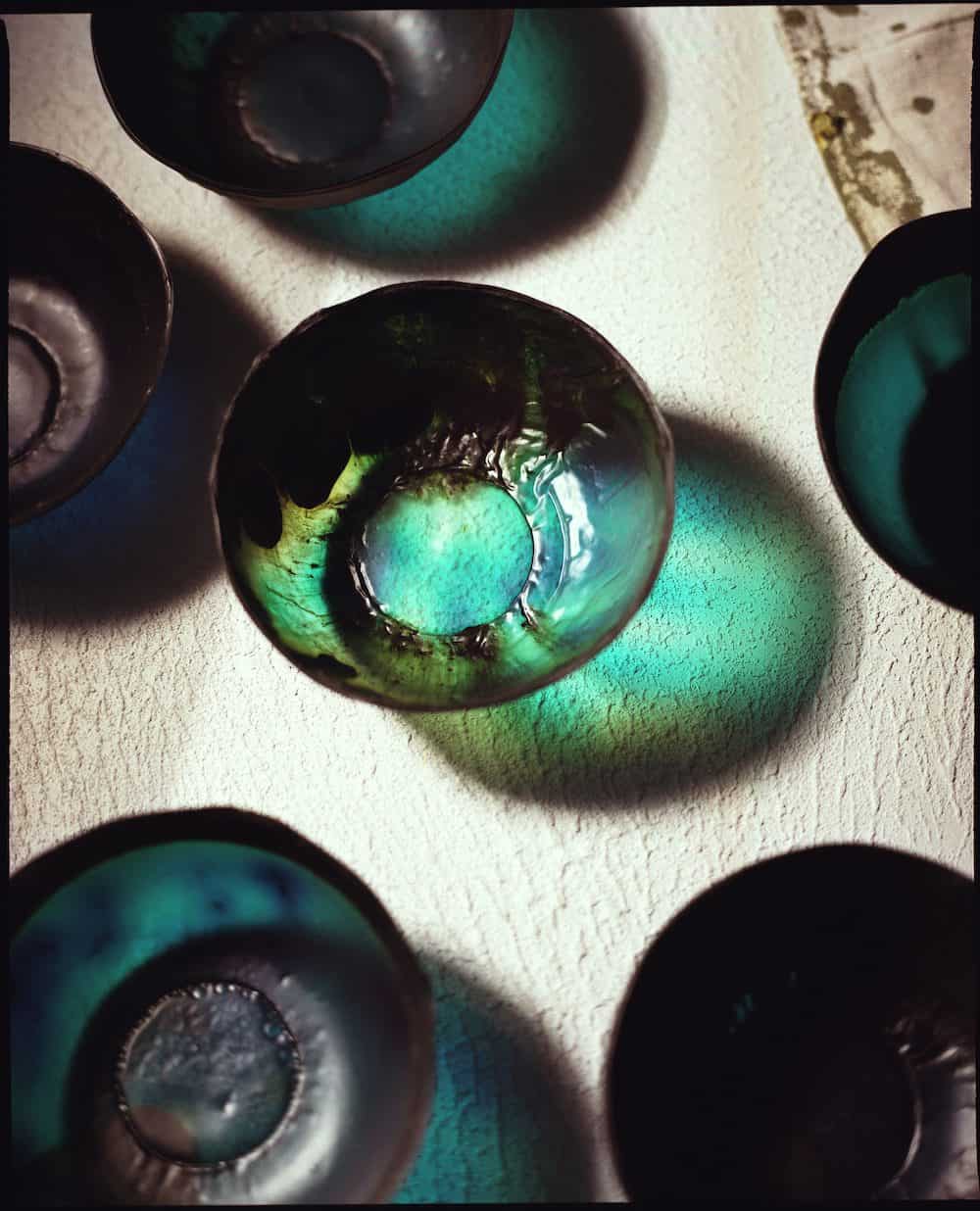
As an artist who has worked in public art and the art conservation space, French has seen a new wave of artists like herself who are working with biomaterials – and galleries that are rethinking their traditional practices on what it means to collect and conserve art. “Maybe there is something that has a higher value in its ability to not stay forever,” she remarks. “We don’t need things to stay forever. In fact, that’s how we’ve got ourselves into trouble by filling the environment with all this stuff that just refused to degrade. It’s degrading our planet by having these things that last forever.
“It is also a counter to that culture of collecting. This idea of collecting historically comes from a colonial practice … so it’s also about questioning where these practices have come from and thinking about the overall culture’s effect on the environment. Having a different way of looking at conservation, whether it’s from a micro level of conserving one object, or a macro level of conserving the world.”
Photography: Pier Carthew; Charles Dennington; Jessie French; Jessica Maurer


